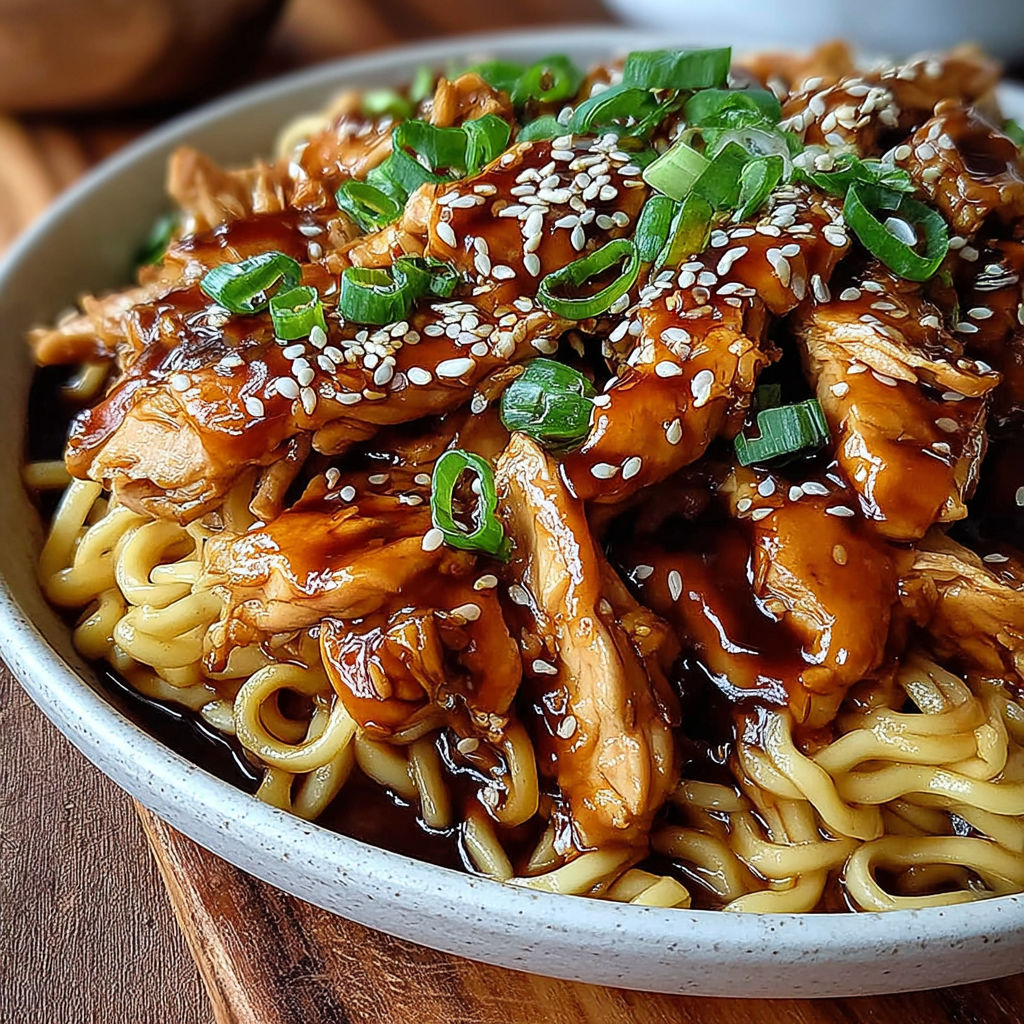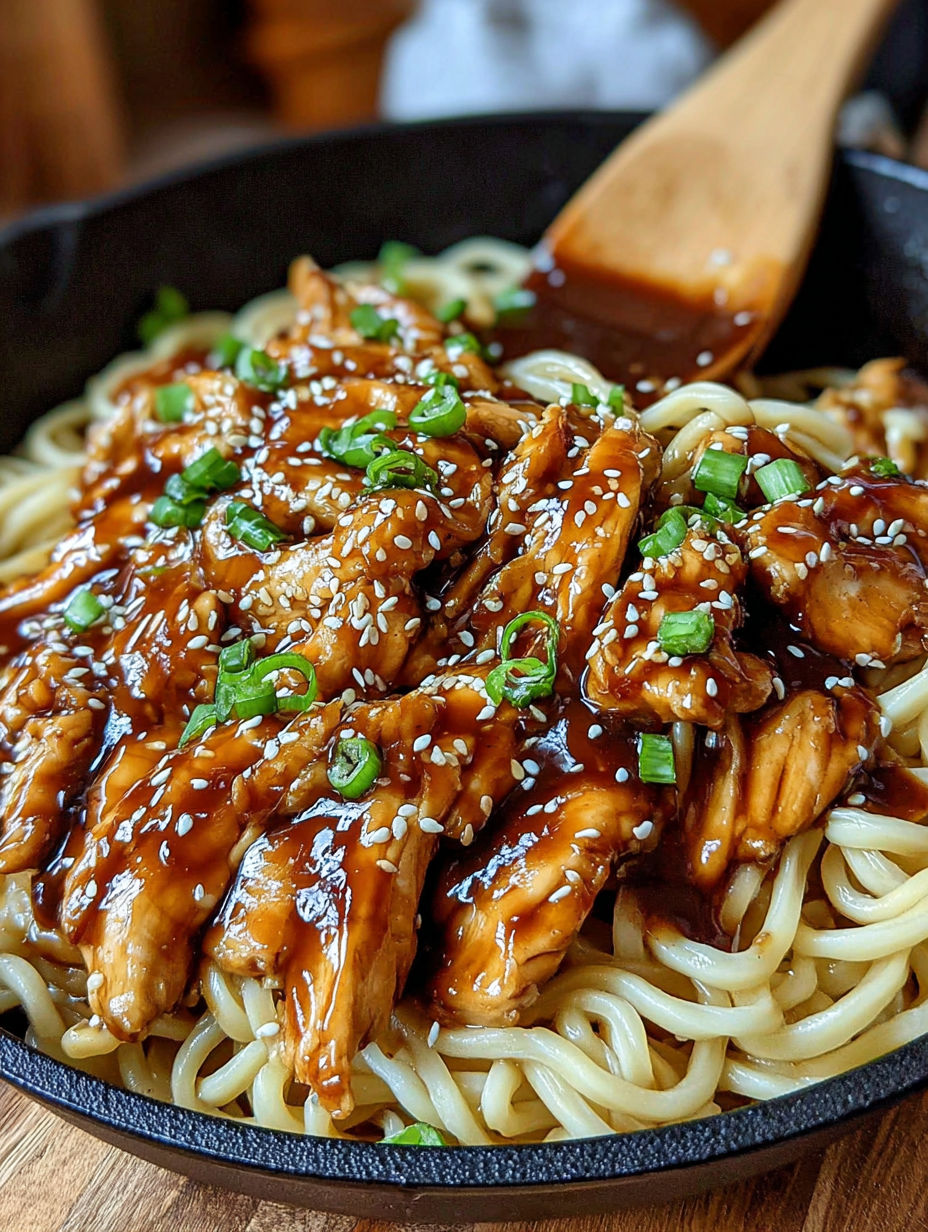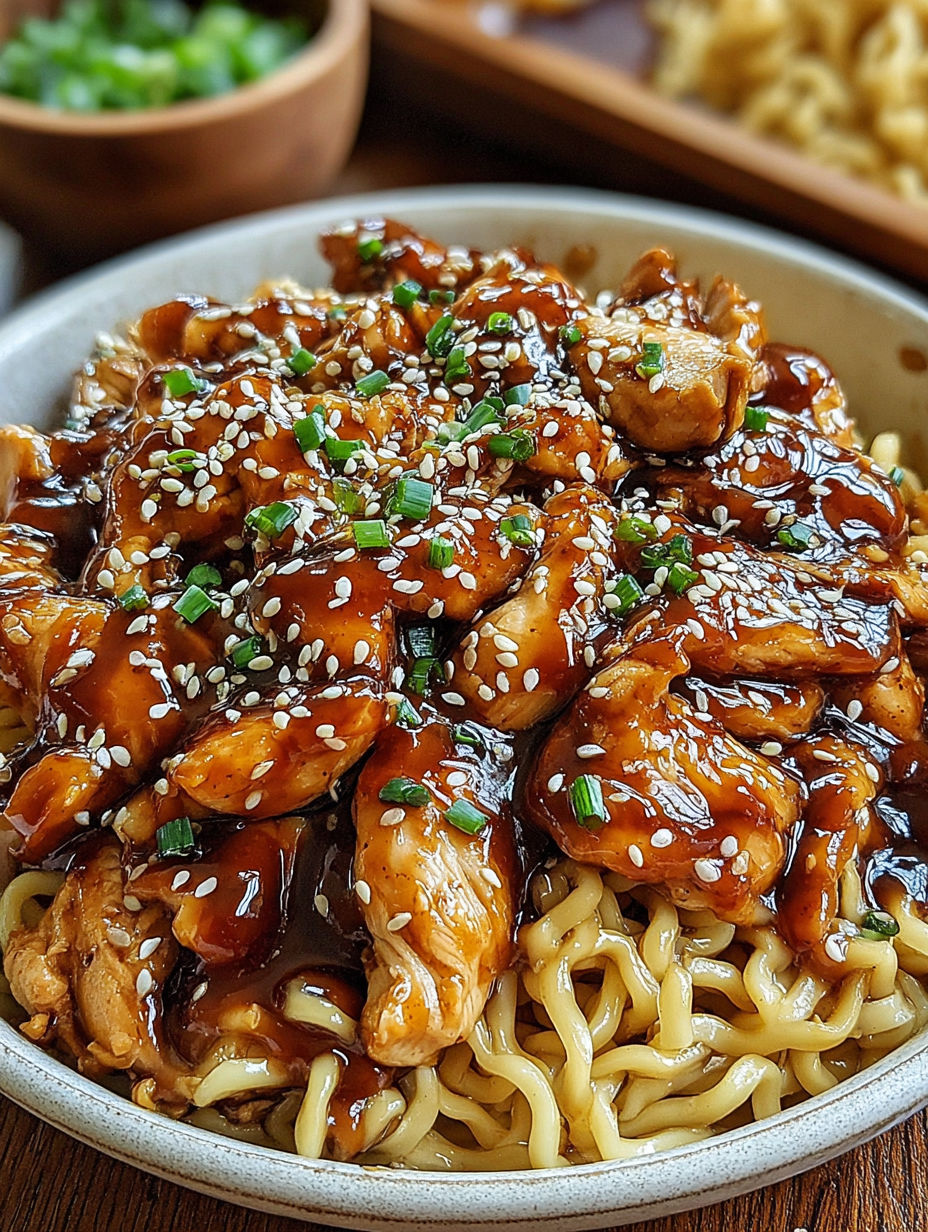 Pin to Save
Pin to Save
Chicken Teriyaki Noodles is a dish that makes dinner feel special with almost no effort. It has juicy marinated chicken and chewy noodles tossed in a glossy teriyaki sauce that clings to every bite. The beauty of this meal is how easily you can switch up the noodles or veggies to fit what you have on hand. The homemade sauce balances sweet and salty just right and coats the chicken so it stays tender not dry. This is the kind of recipe you can make on a rushed Monday night or as a family treat on Saturday.
Whenever I make these noodles my family hovers around the stove hoping for taste tests. The sauce smells amazing as soon as the ginger and garlic hit the pan so everyone knows dinner is going to be good.
Ingredients
- Chicken breast: gives lean protein and is quick to sear
- Soy sauce: is the core salty and savory backbone choose low sodium for lighter salt
- Teriyaki sauce: contributes glossy sweetness and depth check labels for real ginger and garlic if buying ready-made
- Honey: balances the savory with a gentle sweet note use local honey for the best flavor
- Rice vinegar: brings brightness making sure the dish never tastes flat
- Garlic and ginger: fresh is best for big flavor and aroma
- Sesame oil: is essential for its nutty toasty undertone pick a toasted variety for rich color
- Noodles: are the dish’s heart egg udon or rice noodles all work just cook until bouncy not mushy
- Sesame seeds: add crunch and visual pop toast briefly for extra flavor
- Green onions: give sharp freshness slice them thin and use the green and the white parts
Instructions
- Prepare and Marinate the Chicken:
- In a medium bowl stir together soy sauce teriyaki sauce honey rice vinegar minced garlic and grated ginger until blended. Add the sliced chicken and toss so every piece is coated. Let this rest for at least ten minutes while you prep everything else.
- Sear the Chicken:
- Pour sesame oil into a large skillet or wok and bring to medium high heat. Add the marinated chicken in a single layer and let it cook for approximately six to eight minutes. Stir only as needed so the edges caramelize and the chicken cooks through. Transfer chicken to a clean plate and set aside for later.
- Cook the Noodles:
- Meanwhile cook noodles according to the package directions until just al dente so they remain springy. Drain well.
- Toss Noodles in Sesame and Soy:
- In the same skillet add another splash of sesame oil and dump in the drained noodles. Pour over the soy sauce and use tongs to stir fry them for one to two minutes. This lets the noodles absorb flavor and lightly toast instead of sitting in a pool of sauce.
- Combine Chicken and Noodles:
- Return the cooked chicken and any resting juices to the pan with the noodles. Gently toss everything together for another two to three minutes so the flavors meld and everything is heated through.
- Finish with Garnishes:
- Scatter sesame seeds and fresh sliced green onions on top of the noodles. If you want some heat sprinkle over red pepper flakes to taste. Serve immediately so the noodles do not dry out.

Green onions are my favorite addition for this recipe. They add not only a pop of color but tie together the brightness and sharpness that cuts through the rich sauce. I grew up with my mom always topping bowls of noodles with a handful of green onion and now it is a family ritual we look forward to.
Storage Tips
Let leftovers cool completely before storing to keep noodles from going soggy. Use an airtight container and refrigerate for up to three days. To reheat add a splash of water and gently warm on the stove or microwave until just hot. Avoid repeated reheating which can dry the noodles.
Ingredient Substitutions
Swap chicken for shrimp tofu or thinly sliced beef and adjust cook times accordingly. For gluten free needs use tamari in place of soy sauce and choose rice noodles. Maple syrup works as a substitute for honey and coconut aminos can stand in for soy sauce for a soy free option.
Serving Suggestions
Serve Chicken Teriyaki Noodles as a filling main course or add a plate of steamed broccoli or snap peas on the side for extra crunch. For special nights I serve this dish with a bowl of miso soup and pickled cucumbers to balance the warmth of the noodles.
Cultural and Seasonal Context
Teriyaki flavors have roots in Japanese cuisine with glossy soy based sauces used as marinades and glazes. By tossing it with noodles and customizable vegetables this recipe leans toward modern Asian fusion perfect for transitioning into spring with lighter veggies or into fall with roasted carrots or mushrooms.
Seasonal Adaptations
Use thinly sliced asparagus or snow peas in spring for a crisp contrast. Stir in roasted mushrooms and sweet potatoes in autumn. Add raw shredded carrots and cabbage in summer for a fresher bite.
Success Stories
Every time I serve this to friends someone leaves asking for the recipe. Kids gobble up the noodles and I have even had picky eaters go back for seconds. Once my husband asked for this three nights in a row because it tasted better than his favorite takeout spot.
Freezer Meal Conversion
You can freeze both chicken and noodles together for up to a month. Cook the recipe as directed cool fully and transfer to a freezer bag. Thaw in the fridge overnight and stir fry with a bit of water to bring the noodles back to life before serving.

This is a flexible recipe you can revisit all year adapting with fresh vegetables as the seasons change. Chicken Teriyaki Noodles are simple enough for weeknights but crowd-pleasing for company too.
Common Questions About Recipes
- → Can I use frozen chicken?
Yes, fully thaw and pat the chicken dry before marinating for best results.
- → How long do leftovers last?
Store in an airtight container in the fridge for up to 3 days and reheat as needed.
- → Can I substitute the noodles?
Absolutely. Rice noodles, soba, or even spaghetti work well as alternatives.
- → What can I use instead of sesame oil?
Vegetable oil is a fine substitute, though the flavor will be less nutty.
- → Can I make it spicier?
Add chili flakes, sriracha, or chili paste to boost the heat.
- → Can I swap the chicken for another protein?
Pork, beef, or shrimp are great alternatives for more variety.
